Guide to Growing Perfect Pears: Top Varieties and Tips
Published: September 12, 2025 at 2:48:21 PM UTC
Growing pears in your home garden offers multiple rewards that few other fruit trees can match. These elegant trees provide stunning spring blossoms, attractive summer foliage, and delicious autumn fruit that can be enjoyed fresh or preserved. Pear trees are remarkably adaptable to various climates across the United States, with certain varieties thriving in zones 4-9. Whether you have a spacious backyard or a modest garden plot, there's likely a pear variety that will fit your space – from compact dwarf trees perfect for small gardens to standard-sized specimens that create an impressive landscape focal point.
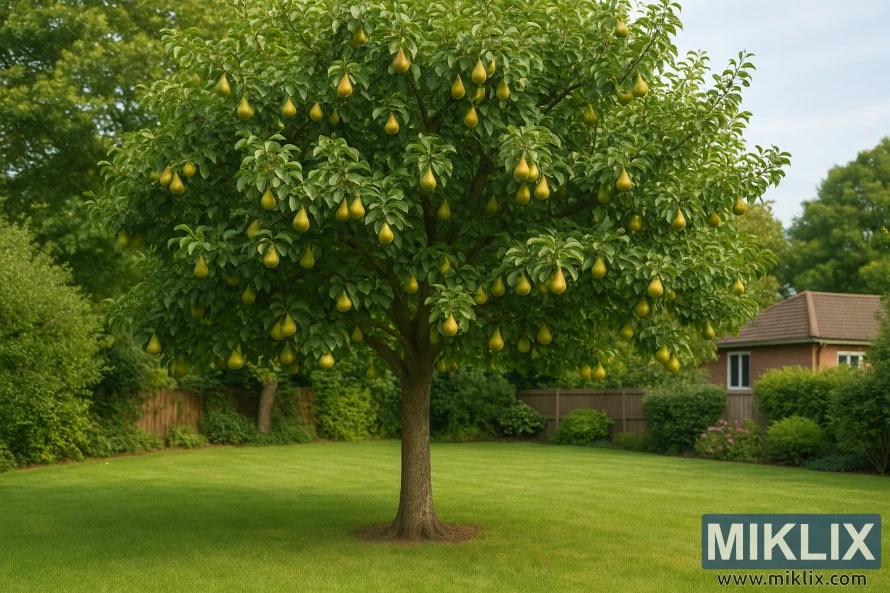
Key Factors for Choosing the Best Pear Varieties for Home Gardens
Selecting the right pear varieties for your garden requires consideration of several important factors. Understanding these elements will help ensure your trees thrive and produce abundant, high-quality fruit for years to come.
- Chill Hours Required: Most pear varieties need between 600-900 chill hours (hours below 45°F) to produce fruit properly. Choose varieties that match your local climate conditions.
- Pollination Needs: Most pear varieties require cross-pollination from another compatible variety that blooms at the same time. Some varieties like 'Warren' and 'Kieffer' are partially self-fertile.
- Disease Resistance: Fire blight resistance is crucial, especially in humid regions. Varieties like 'Moonglow', 'Magness', and 'Warren' offer excellent resistance.
- Harvest Time: Summer pears (harvested August-September) ripen quickly after picking, while winter pears (harvested September-October) require storage before ripening.
- Tree Size: Consider the mature size of your tree. Standard trees reach 18-25 feet tall, while dwarf varieties stay manageable at 8-12 feet.

European Pear Varieties for Home Gardens
European pears (Pyrus communis) are the classic pear-shaped fruits most people recognize. They have a buttery texture when ripe and are typically picked firm, then ripened off the tree. Here are some outstanding European varieties for home gardens:
Bartlett
The quintessential pear with sweet, juicy flesh and that classic "pear flavor." Bartlett pears turn from green to yellow when ripe.
- Flavor: Sweet and aromatic
- Texture: Smooth and juicy
- Growing Zones: 5-8
- Fire Blight: Moderately susceptible
- Harvest: Late August to early September
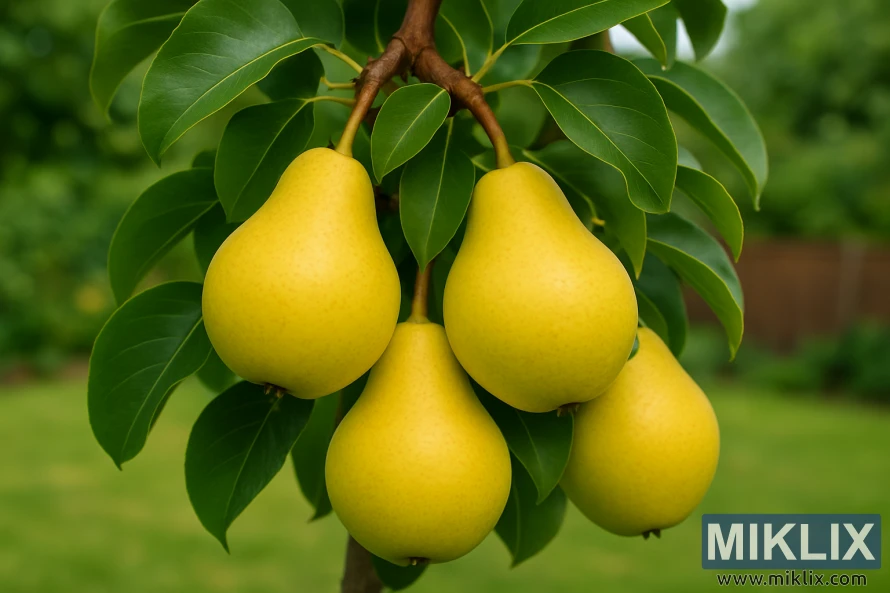
Warren
An exceptional home garden variety with excellent disease resistance and delicious, sweet fruit. Self-fertile, making it perfect for smaller gardens.
- Flavor: Rich, sweet, and juicy
- Texture: Smooth with minimal grit
- Growing Zones: 5-9
- Fire Blight: Highly resistant
- Harvest: Mid-September to October

Moonglow
A reliable producer with excellent disease resistance and high-quality fruit. Nearly free of grit cells for a smooth eating experience.
- Flavor: Sweet and mild
- Texture: Smooth and fine-grained
- Growing Zones: 4-8
- Fire Blight: Highly resistant
- Harvest: Mid-August to early September

Asian Pear Varieties for Home Gardens
Asian pears (Pyrus pyrifolia) are distinctly different from European varieties. They're round, crisp like apples, and are harvested when ripe. They maintain their crisp texture even when fully ripe, making them excellent for fresh eating and salads.
Hosui
One of the most popular Asian pears with exceptionally juicy, sweet flesh and an appealing golden-brown russet skin.
- Flavor: Sweet and aromatic
- Texture: Crisp and juicy
- Growing Zones: 5-9
- Fire Blight: Moderately susceptible
- Harvest: Late August to September

Korean Giant (Olympic)
Produces exceptionally large, round fruits that can weigh up to a pound each. Sweet, crisp flesh makes it perfect for fresh eating.
- Flavor: Sweet and mild
- Texture: Very crisp and juicy
- Growing Zones: 4-9
- Fire Blight: Moderately resistant
- Harvest: September to October
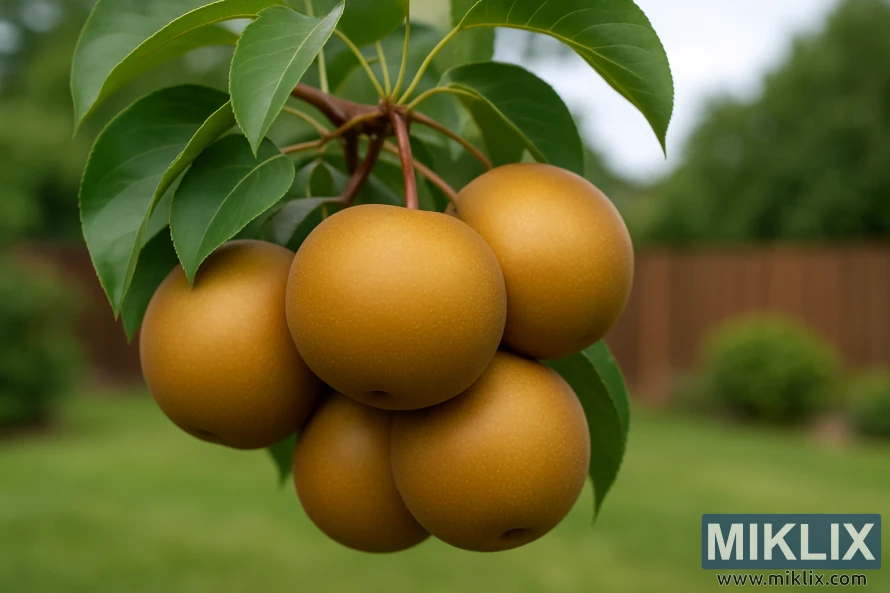
Shinko Fire Blight Resistant
Highly resistant to fire blight, making it an excellent choice for humid regions. Produces medium to large fruits with golden russet skin.
- Flavor: Sweet with hints of butterscotch
- Texture: Crisp and juicy
- Growing Zones: 5-9
- Fire Blight: Highly resistant
- Harvest: September to October
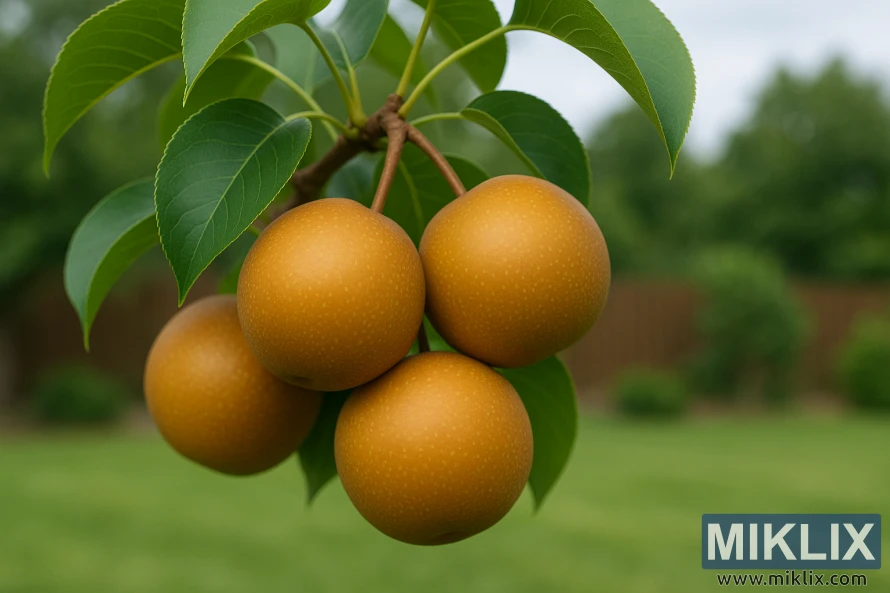
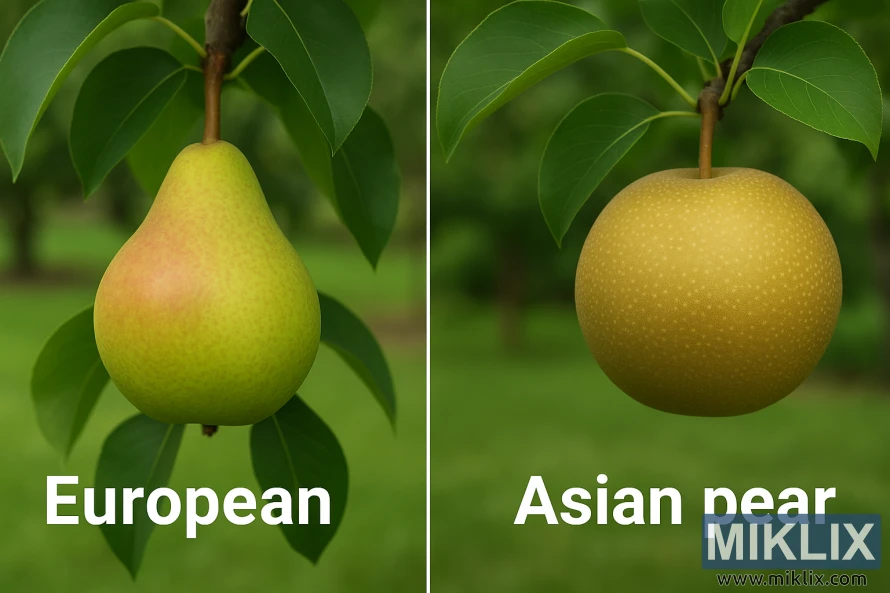
Additional Excellent Pear Varieties for Home Gardens
Beyond the most popular varieties, these additional pear trees offer unique characteristics that make them worthy additions to your home orchard:
Seckel
Often called "sugar pears," these small fruits pack incredible sweetness into a bite-sized package. Partially self-fertile and with good disease resistance.
Growing zones: 5-8
Unique trait: Exceptionally sweet, small fruits perfect for snacking and preserves
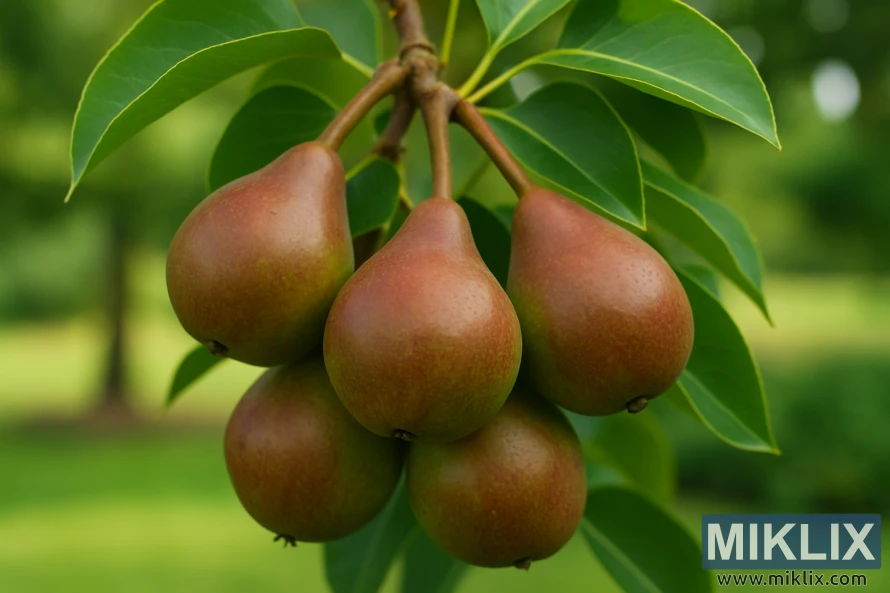
Kieffer
A hardy, vigorous tree that produces large crops of firm fruit. Excellent for canning and preserves, with good disease resistance.
Growing zones: 4-9
Unique trait: Extremely productive and adaptable to various soil conditions
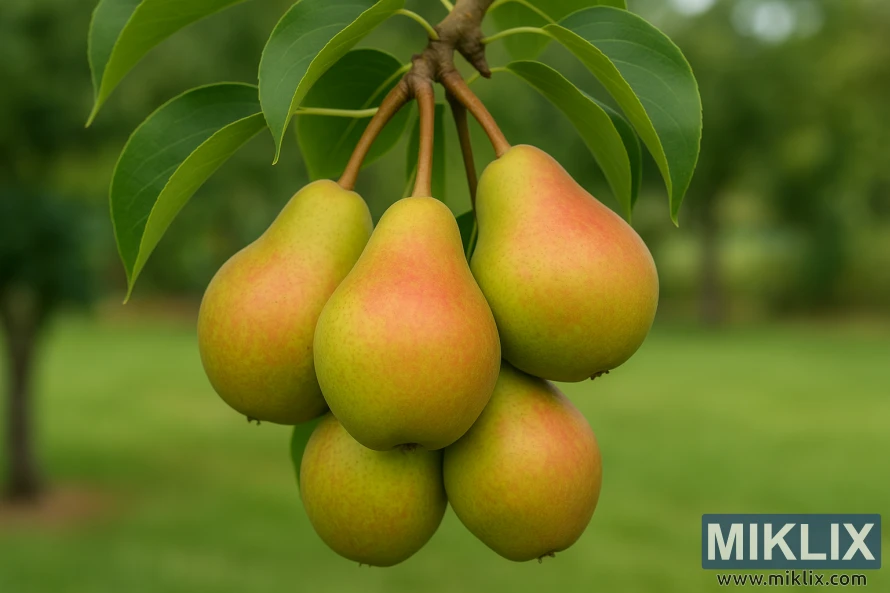
Planting and Care Tips for Pear Trees in Home Gardens
Proper planting and care are essential for establishing healthy, productive pear trees. Follow these guidelines to give your trees the best start and maintain them for years of abundant harvests.
Site Selection and Soil Preparation
- Sunlight: Choose a location that receives at least 6-8 hours of full sun daily. Morning sun is particularly important as it helps dry dew from leaves, reducing disease risk.
- Air Circulation: Good air drainage helps prevent frost damage to early blooms. Avoid low spots where cold air settles.
- Soil: Pears adapt to various soil types but prefer well-drained soil with a pH between 6.0-7.0. Conduct a soil test before planting.
- Spacing: Plant standard trees 18-25 feet apart, semi-dwarf 12-15 feet apart, and dwarf varieties 8-10 feet apart.
Planting Steps
- Dig a hole wide enough to accommodate the roots without bending them, typically 2-3 times wider than the root ball but no deeper.
- Position the tree with the graft union (swollen area on the trunk) 2-3 inches above the soil line.
- Backfill with native soil, gently tamping down to remove air pockets. Water thoroughly.
- Apply mulch in a 3-foot circle around the tree, keeping it 3-4 inches away from the trunk.
- Prune the newly planted tree to a height of 24-30 inches to encourage branching.

First-Year Pruning
After the first growing season, select 4-6 well-spaced branches to become the main scaffold limbs. Remove any branches with narrow crotch angles (less than 60°) as these are prone to splitting under fruit weight. Train branches to a 45-degree angle using string ties to create a strong tree structure.
Ongoing Care
Watering
Water deeply but infrequently, allowing the soil to dry slightly between waterings. Established trees (3+ years) typically need water only during prolonged dry periods.
Fertilizing
Apply fertilizer sparingly. Too much nitrogen promotes excessive growth that's susceptible to fire blight. For bearing trees, apply 1 cup of 10-10-10 per year of tree age (maximum 12 cups), split between early spring and after fruit set.
Pruning
Prune during the dormant season to maintain an open center that allows light penetration. Remove dead, diseased, or crossing branches. Disinfect pruning tools between cuts when removing diseased wood.
Pest and Disease Management
Monitor for fire blight, pear scab, and codling moth. Remove infected branches promptly, cutting at least 6 inches below visible infection. Consider resistant varieties if disease pressure is high in your area.
Common Mistake: Harvesting Too Late
Unlike many fruits, European pears should be harvested when mature but still firm. They'll ripen properly off the tree. If left to ripen on the tree, they develop a gritty texture and may suffer from core breakdown. Asian pears, however, should be left on the tree until fully ripe.
Training young branches to a 45-degree angle creates a strong structure that can support heavy fruit loads
Understanding Pear Tree Pollination for Home Gardens
Most pear varieties require cross-pollination from another compatible variety to produce fruit. Understanding pollination requirements is essential for a successful harvest.
| Variety | Self-Fertile? | Good Pollinators | Bloom Time |
| Bartlett | No | Bosc, Moonglow, Seckel | Mid-season |
| Warren | Partially | Kieffer, Orient | Mid to late |
| Moonglow | No | Bartlett, Seckel | Mid-season |
| Hosui (Asian) | No | Shinko, Chojuro, Korean Giant | Mid-season |
| Shinko (Asian) | No | Hosui, Korean Giant | Mid-season |
| Kieffer | Partially | Orient, Warren | Early to mid |
Pollination Tip
For the best fruit set, plant at least two compatible varieties that bloom at the same time. Even partially self-fertile varieties will produce better crops with a pollination partner. If space is limited, consider planting a multi-grafted pear tree with compatible varieties on a single rootstock.
Bees are essential pollinators for pear trees - planting bee-friendly flowers nearby can improve fruit set.

Harvesting and Enjoying Pears from Your Home Garden
Knowing when and how to harvest pears is crucial for enjoying them at their peak flavor. European and Asian pears have different harvesting requirements.
Harvesting European Pears
Unlike many fruits, European pears should be harvested when mature but still firm, then ripened off the tree. Signs of maturity include:
- Skin color lightens from deep green to a lighter shade
- Lenticels (small dots on the skin) change from white to brown
- Fruit stems begin to separate easily from the branch when the fruit is lifted and twisted
- Seeds have turned brown
After harvesting, ripen European pears at room temperature (65-75°F). Depending on the variety, ripening may take 3-10 days. The fruit is ready to eat when it yields slightly to gentle pressure at the stem end.
Harvesting Asian Pears
Unlike European varieties, Asian pears should be allowed to ripen fully on the tree. They're ready to harvest when they reach full size and develop their characteristic color (usually golden brown). Asian pears will be crisp and juicy when ripe, similar to the texture of an apple.
Speeding Up Ripening
To accelerate ripening, place European pears in a paper bag with a ripe banana or apple. The ethylene gas produced by these fruits will speed up the ripening process. Check daily for ripeness.
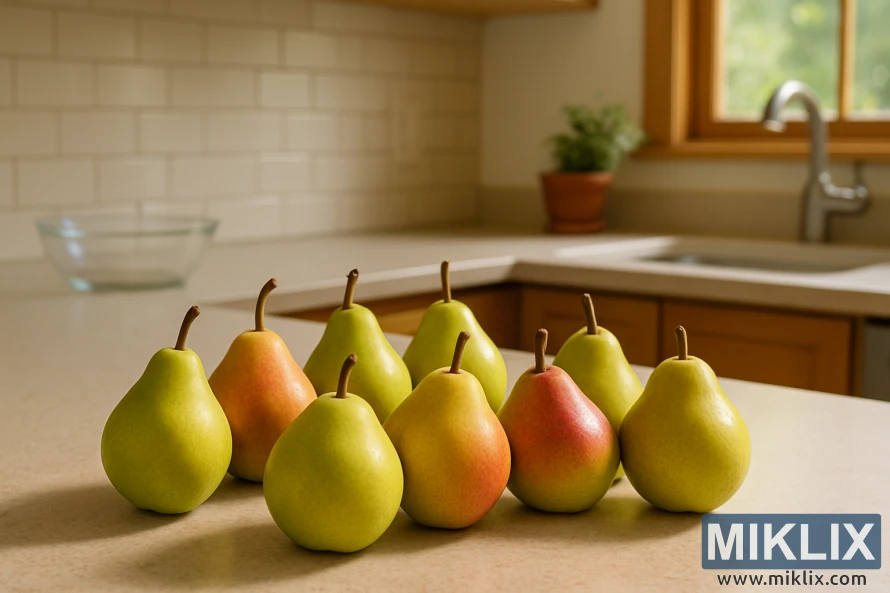
Conclusion
Growing pears in your home garden offers a rewarding experience with beautiful blossoms in spring and delicious fruit in late summer and fall. By selecting varieties suited to your climate, considering disease resistance, and understanding pollination requirements, you can enjoy abundant harvests for many years.
For beginners, disease-resistant varieties like Warren, Moonglow, and Shinko offer the best chance of success, especially in humid regions where fire blight can be problematic. If space is limited, consider dwarf varieties or partially self-fertile options like Warren or Kieffer.
Remember that pear trees are long-lived – many productive trees are over 50 years old – so choose varieties you truly enjoy eating. With proper care and maintenance, your pear trees will provide beauty and bounty for generations to come.
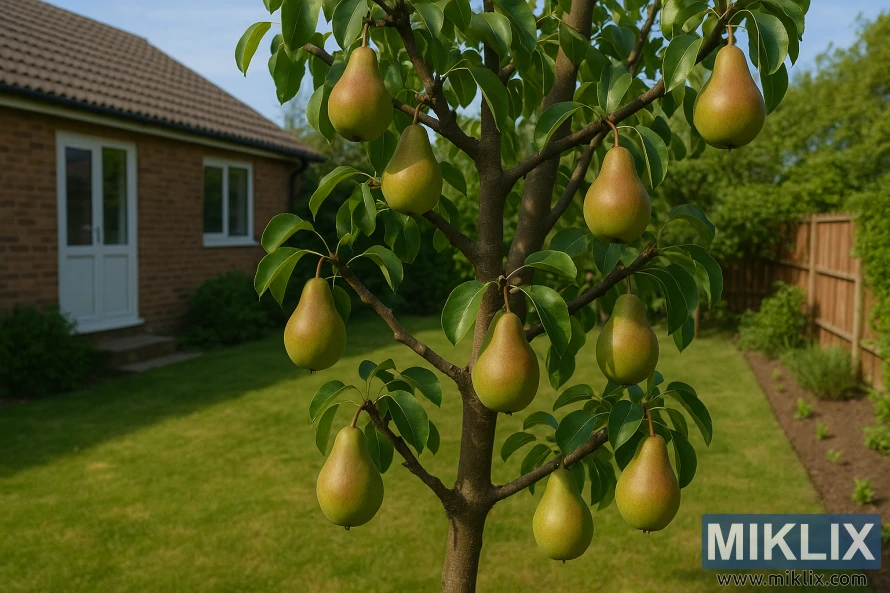
Further Reading
If you enjoyed this post, you may also like these suggestions:
- A Guide to Growing the Best Mangoes in Your Home Garden
- Growing Persimmons: A Guide to Cultivating Sweet Success
- Growing Blueberries: A Guide to Sweet Success in Your Garden
